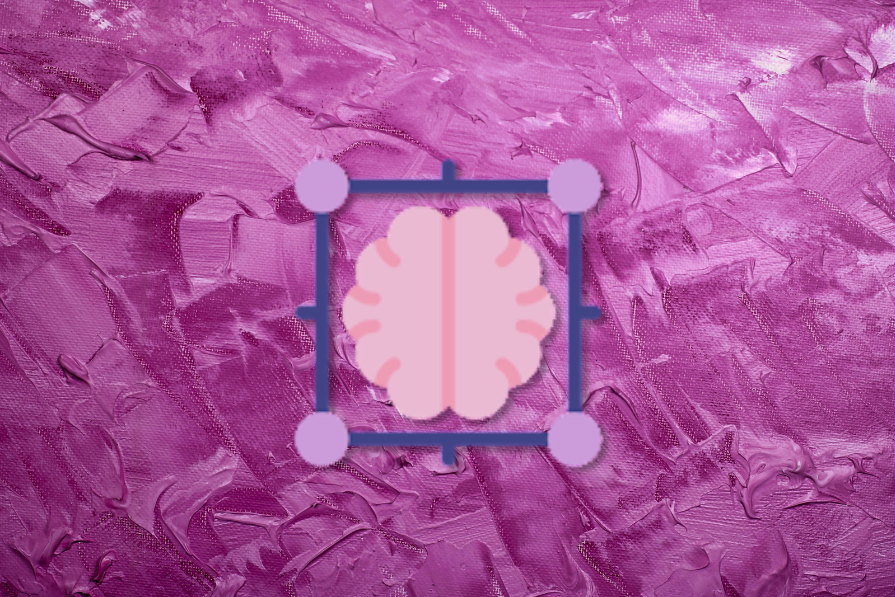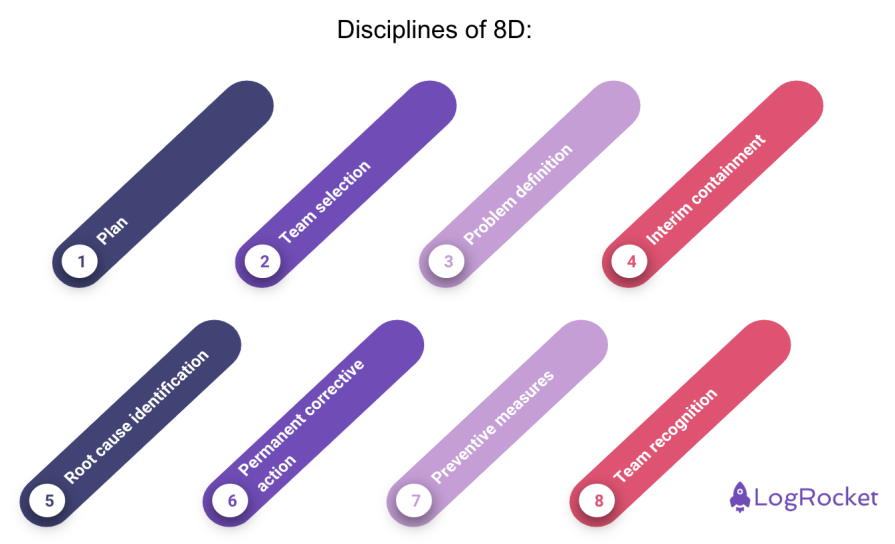The 8D problem-solving method is a powerful tool in product management. It’s designed to help product managers tackle issues systematically and enhance product quality. This method follows eight steps in total, hence the name 8D.

The steps range from identifying problems to implementing long-term solutions. Today you’ll explore how you can effectively apply 8D to your products. You’ll also learn about the benefits of using this approach and analyze some real case studies.
The 8D problem-solving method is designed to address and resolve problems by identifying, correcting, and eliminating recurring issues.
It involves eight different steps:
These steps focus on root cause analysis, preventive measures, and long-term solution implementation. The end goal is to improve product quality and operational efficiency.
The eight disciplines of the 8D method represent a comprehensive approach to solve problems within an organization. Each discipline is designed to guide teams through the process at each stage. Here’s a deeper look into each stage:

This initial step involves preparing for the problem-solving process. The goal here is to understand the problem’s magnitude and set up objectives. It’s about getting ready to tackle the issue systematically.
In this step, a cross-functional team is formed. The team should consist of individuals with the necessary knowledge, skills, and experience to address the problem effectively. The team works together throughout the 8D process.
Next, the team has to describe the issue in specific terms. The goal here is to understand the impact and scope of the complication. A well-defined problem is easier to solve.
In the process of finding a solution, temporary measures are taken to contain the problem and prevent it from worsening. This reduces further damage or impact to the involved operations.
In this phase, the team uses various tools and techniques to identify the underlying cause of the problem. An understanding of the root cause is essential for developing an effective, lasting solution.
With the root cause identified, the team moves to develop a permanent corrective action plan to resolve the issue. Now, the team needs to choose the best solution, implement it, and monitor its effectiveness. This analysis will ensure that the problem is truly resolved.
With such vast processes, there is always a possibility of the problem recurring. To resolve this, the team identifies and implements measures that address the root cause. There might be a need for changes to different aspects of the overall approach.
The final stage focuses on acknowledging and rewarding the team’s efforts. Recognizing the team’s hard work and success in resolving the issue is important for morale. It also promotes a culture of continuous improvement.
By following these eight disciplines, product managers can solve problems more effectively. The other benefit is that it builds a proactive culture that addresses issues before they escalate.
Applying the 8D problem-solving method in product management involves leveraging its structured approach. This helps you eliminate problems and process improvement initiatives.
The 8D process begins with gathering data and feedback to quickly identify potential issues. After that, a diverse team from various departments works together to uncover issues. And finally, the team solves the problems efficiently.
Once a problem is spotted, quick fixes are applied to limit its impact. Simultaneously, you explore root causes of an issue using methods like the Five Whys. The final step is to implement the solution based on these insights. Occasionally, redesigns or process upgrades are also used to resolve the issue thoroughly.
To eliminate recurring problems, it’s crucial to establish preventive measures. Several steps support the main goal of elimination including process adjustments, quality control improvements, and updates to design standards.
The insights gathered from each 8D cycle help with continuous improvement. It also aids in formulating strategies to avert future issues.
The main benefit of using the 8D method is its impact on teamwork and continuous improvement. The more obvious benefits focus on root cause analysis and prevention of issues:
The systematic approach to address issues ensures that no effort goes to waste. Eventually, it helps the teams to quickly propose long-term solutions to a range of problem patterns.
The 8D problem-solving method is extremely valuable when used in the right manner. However, there can be challenges at every stage of this process. Because of this, it’s beneficial for you to have an understanding of how to quickly identify these challenges.
These include:
How to solve them?
For a deeper understanding, let’s take a look at two case studies of how the 8D process can enhance the product management workflow.
A leading tech company, (similar to Apple) faced public backlash over smartphones overheating and reduced battery life. In this context, the 8D method helped to quickly identify and contain the issues.
The root cause analysis helped it track the problem back to a battery design flaw. Collaborative efforts with the battery supplier led to a redesigned battery and an update to the operating system. This not only resolved the issue but also restored consumer trust. Eventually, the brand’s reputation for quality was restored.
Similarly, a major automaker found a software glitch in its driver-assistance systems. This issue was risking driver safety. Using the 8D method, it pinpointed outdated algorithms as the root cause. The solution was simple, it issued a software update and enhanced its development processes.
Both of these examples are evidence of how the 8D method can be utilized to prevent complications efficiently.
In wrapping up, it’s clear that this approach is more than just a procedure. Think of it as a strategic framework designed for the product manager. The 8D method equips you with a robust toolkit for addressing and preempting issues, systematically.
On top of that it helps you to:
Feel free to comment with any questions you may have!
Featured image source: IconScout

LogRocket identifies friction points in the user experience so you can make informed decisions about product and design changes that must happen to hit your goals.
With LogRocket, you can understand the scope of the issues affecting your product and prioritize the changes that need to be made. LogRocket simplifies workflows by allowing Engineering, Product, UX, and Design teams to work from the same data as you, eliminating any confusion about what needs to be done.
Get your teams on the same page — try LogRocket today.

A practical framework for PMs to use AI in ideation without sacrificing judgment, strategy, or decision quality.

A practical five minute revenue estimation method to help product managers compare ideas, drop low impact features, and prioritize smarter.

A practical guide for PMs who want to stop being bottlenecks, delegate smarter, and lead teams effectively with a clear ownership framework.

Stop letting unreliable data block features. Treat data as inventory to track quality, ownership, and ship with confidence.